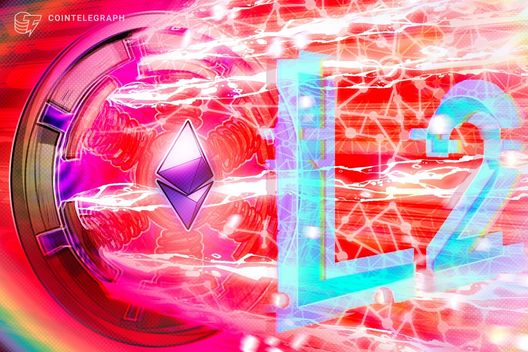In a recent statement, Anatoly Yakovenko, the co-founder of the Solana blockchain, has raised significant concerns regarding the security and centralization problems facing Ethereum layer-2 networks. As these networks gain traction for their potential to enhance Ethereum’s scalability and transaction speed, Yakovenko’s remarks shine a spotlight on the underlying vulnerabilities that may undermine user confidence.
Layer-2 solutions are designed to improve the performance of blockchain networks by processing transactions outside the main chain, which is intended to alleviate congestion. However, Yakovenko argues that these improvements come at a cost, warning that the current state of security and the centralization tendencies of these solutions could pose risks to users and developers alike.
“While layer-2 networks aim to provide more efficiency, we must not overlook the challenges they bring in terms of security and centralization,” Yakovenko stated, prompting the community to rethink the balance between speed and safety.
This critical perspective emphasizes the importance of scrutinizing scaling solutions within the evolving cryptocurrency landscape. As Ethereum continues to dominate discussions around decentralized finance and smart contracts, understanding the implications of its layer-2 networks becomes increasingly vital for stakeholders in the cryptocurrency ecosystem.
Security and Centralization Issues in Ethereum Layer-2 Networks
Important insights regarding Ethereum layer-2 networks as discussed by Anatoly Yakovenko:
- Security Concerns:
- Layer-2 solutions may experience vulnerabilities that can be exploited, posing risks to users’ assets.
- Inadequate security measures can lead to potential financial losses for users relying on these networks.
- Centralization Risks:
- Heavy reliance on specific intermediaries or validators may diminish the decentralized nature of Ethereum.
- Increased centralization can lead to control by a few entities, undermining the core principles of blockchain technology.
- Impact on User Trust:
- Security and centralization issues may lead to reduced user confidence in layer-2 networks.
- Users may seek alternative solutions, affecting the adoption and growth of Ethereum’s ecosystem.
- Future Development:
- Identifying and addressing these issues is crucial for the evolution of Ethereum and its layer-2 solutions.
- Improvements could influence broader blockchain technology and network strategies moving forward.
Anatoly Yakovenko highlights that without addressing these concerns, Ethereum layer-2 networks may fail to fulfill their intended purpose of providing scalable and secure solutions.
Ethereum Layer-2 Networks Under Scrutiny: Insights from Solana’s Co-Founder
In a recent statement, Anatoly Yakovenko, the visionary behind the Solana blockchain, highlighted significant security and centralization concerns surrounding Ethereum’s layer-2 networks. His comments bring to light a critical analysis of the current competitive landscape within blockchain technology and layer-2 solutions.
On the competitive front, Ethereum’s layer-2 solutions, like Optimism and Arbitrum, have gained traction due to their scalability and transaction speed. However, Yakovenko’s emphasis on their vulnerabilities presents a stark contrast to Solana’s design, which boasts a more decentralized architecture. This revelation creates a potential competitive advantage for Solana, appealing to developers and investors seeking robust security without the risks of centralization.
Yet, while Yakovenko’s perspective could bolster confidence in Solana’s network, it poses challenges for Ethereum projects. Developers heavily invested in Ethereum’s ecosystem might need to reevaluate their strategies, leading to potential disruption as they consider migrating to alternatives. This scenario could be beneficial for users looking for faster and less centralized options but problematic for Ethereum’s long-standing dominance, which may suffer as stakeholders seek greener pastures.
Moreover, amid rising scrutiny, Ethereum’s supporters may aim to fortify their layer-2 infrastructures, potentially driving innovation. However, should they fall short in addressing these criticisms, it could hinder broader adoption and diminish developer interest. In contrast, Solana could capitalize on this discontent, drawing talent and innovative projects away from Ethereum, positioning itself as a viable alternative in the crowded blockchain space.
In summary, Yakovenko’s analysis points to a crucial moment in the evolution of blockchain technology, particularly for Ethereum layer-2 networks. As the dialogue around security and centralization intensifies, stakeholders across the ecosystem must navigate these shifts carefully, weighing potential benefits against emerging challenges.














